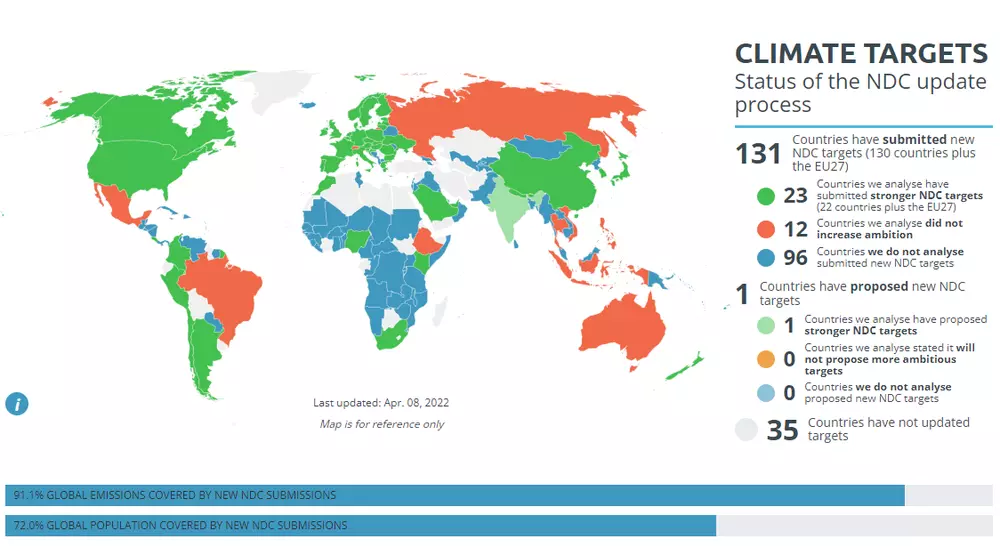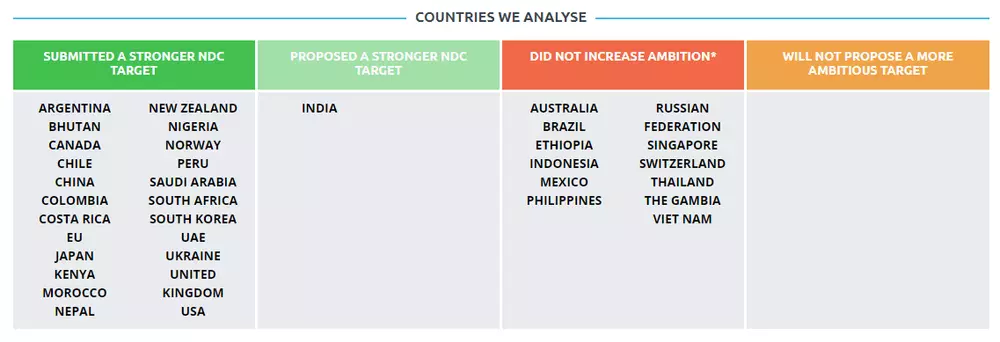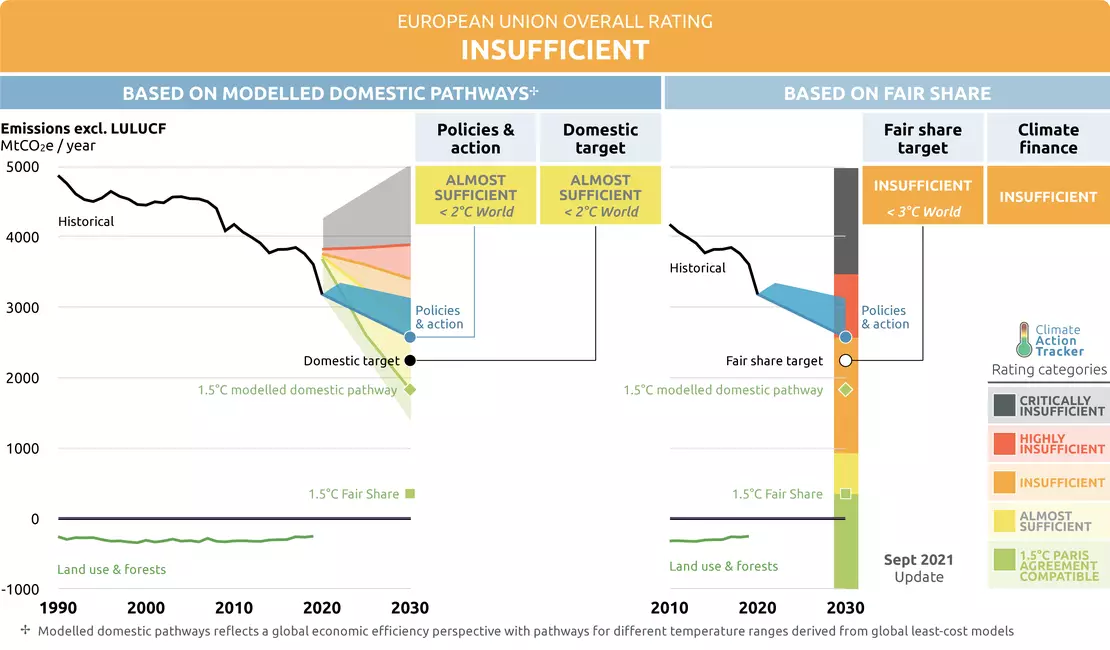Few countries now doubt the existence of the climate crisis : heat waves, tsunamis, extreme temperatures, floods, droughts, etc., have put on the table a real problem that needs to be addressed urgently. However, it is not a priority for all countries, as shown by the climate action tracker map that analyzes the commitment of 131 countries, thanks to data from Climate Analytics and the New Climate Institute.
The Climate Action Tracker (CAT) is an independent scientific analysis produced by two research organizations tracking climate action since 2009. “We track progress towards the globally agreed target of keeping warming well below 2°C and make efforts to limit warming to 1.5°C”.

The Climate Action Tracker Map.
It is based on the 2015 Paris Agreement, a legally binding international treaty on climate change. It was adopted by 196 countries at COP21 in Paris on December 12, 2015 and entered into force on November 4, 2016.
Its main objective is to limit global warming below 2ºC , preferably at 1.5 °C, compared to pre-industrial levels (from the 1990s). It is a milestone because, for the first time, it has been a binding agreement in which there is jointly a common cause.
"In Paris, governments also agreed to present long-term strategies for 2020 and more than a dozen countries have done so. A growing number of governments have also adopted net-zero emissions targets by mid-century. While these developments are encouraging, it is critical that the 2030 goals are aligned with pathways that can meet mid-century net-zero emissions targets,” they write in Climate Action Tracker.

GLOBAL COMMITMENTS IN DOUBT
The map indicates in green those countries that are providing new measures to improve the reduction of emissions by 2030 as well as reduce global warming. In this sense, we see how the US, China, the United Kingdom or Argentina are taking small steps. “The updated US government Paris Agreement target of 50-52% by 2030 below 2005 levels is an important step forward that would reduce the global emissions gap by 5-10% in 2030, the largest reduction additional national proposal in the 2020/2021 round of climate objective updates”, they point out from Climate Action Tracker.
In the case of China, there are also positive data. “China also officially unveiled its carbon neutrality goal before 2060 through its Long-Term Low Greenhouse Gas Emissions Development Strategy, first announced on September 22, 2020.”

data from the European Union.
Although the map analyzes the countries individually, the same does not happen with the European Union, which is analyzed as a conglomerate. In this sense, it highlights that the EU committed to reducing emissions by 55% -below those of 1990-, however, at the moment they are 52.8%.
“While this 2030 target is a step in the right direction, not yet enough for the EU to be compatible with the 1.5°C target of the Paris Agreement . National emission reductions of between 58% and 70% are needed to make the EU effort compatible with the Paris Agreement. The EU should also provide more support to developing countries for emission reductions abroad to ensure you are contributing your fair share of the global mitigation burden.” More information on this can be found at this link.
On the opposite side, marked in red, are countries such as Russia, Brazil, Mexico, Indonesia, Switzerland, Thailand, Vietnam and Australia, among others.
IPCC SR1.5 has shown that whether or not the required emission reductions are met by 2030, the ability to limit warming to 1.5˚C would still be greatly compromised.
